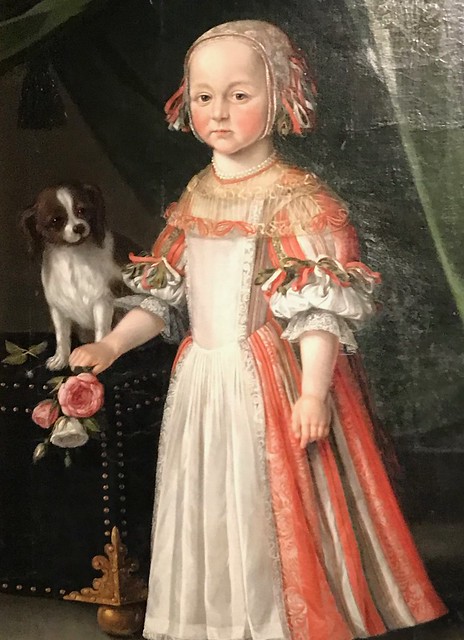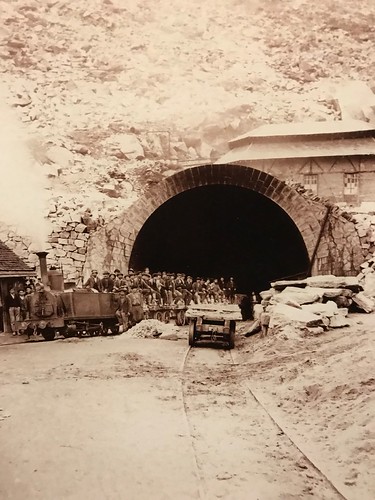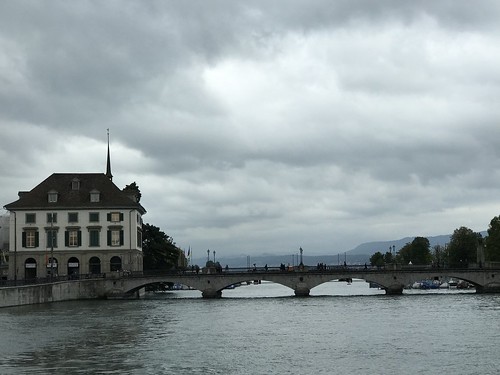When you only have time to visit one museum at a destination, how do you narrow down your choices to just one? Most major cities have a plethora of options. Sometimes, selecting an attraction ends up being decided by logistics. Zurich's National Museum satisfied both my interest in history and was conveniently located near the Zurich central train station. I continued with my history theme when I perused my options for dinner. I was able to find a restaurant with a notable history offering healthy food choices.

ZURICH'S NATIONAL MUSEUM
Small countries like Switzerland rarely find a prominent place in American history textbooks. Even though I studied a fair amount of social studies in high school and was a history major in college, I don't recall learning much about Switzerland.
The National Museum opened a new chapter in my quest to be a lifelong learner. In retrospect, I wish my time onsite was not limited to less than two hours. Pressed for time, I stopped at exhibits that grabbed my attention. My sporadic connection to displays caused me to walk away with small nuggets of unrelated information. Fortunately, English signs were everywhere so I could grasp a few facts to put my visit into perspective.

Exterior of Museum
Weapons
Until I read the sign, I couldn't figure out whether the long poles were a sculpture or a display. The pikes and halberds were used by the Confederate foot soldiers and horsemen in the 16th-century.
Zurich Cityscape
The colorful city panorama was an eye-catcher. The piece gained more significance when I read about the painting's history. This Zurich cityscape originally depicted the martyrdom of the patron saints of Zurich. During the Iconoclasm, the picture was put into storage because images were considered idols. At a later date, the saints were painted over, and the painting's religious significance was lost.

Zurich Cityscape
Urban Bourgeoisie
• 17 Century Table Manners
The people seated at the table are arranged according to their age and gender. This oil on canvas illustrated bourgeois life in the 17th-century when affluent families arranged the marriages of their children within existing social circles.

Urban Bourgeoisie
• Strategic Marriage
Daughters were prepared for marriage at an early age. This portrait illustrates how young children were made to look like aristocratic adults.

Strategic Marriage
• Bourgeoisie Family
Families often posed for a painter. The parents are the focal point surrounded by their children. The extended family is in the background.

Family Portrait
Historical Scenes
This early 18th-century wool and silk tapestry depicts the 1663 signing of a mercenary alliance agreement with King Louis XIV at Notre Dame in Paris.

Wool and silk Tapestry depicting signing of agreement in Norte Dame in Parispeg
Cultured Conversations
At the end of the 18th century and beginning of the 19th century, affluent men and women met in salons. The corner armchairs offered opportunities for people to face one another while conversing.

Pair of Salon Arm chairs
Railway Construction
Before arriving in Zurich, I had traveled for about a week. Throughout my journey, I was fascinated by the preponderance of Swiss tunnels cutting through the mountains. The first Gotthard Railway tunnel was opened in 1882. Alfred Escher's financing policy funded the building project carried out by Italian workers. This innovation makes it possible for people to travel throughout Switzerland today.

Gotthard Railway Tunnel
Holocaust Exhibit
A handful of stories are retold at video kiosks highlighting the work done by a few relief organizations and individuals. Sometimes their actions ran contrary to Swiss policies. Carl Lutz is one notable example.

Carl Lutz, Vice Consul, handed out diplomatic documents to Jews in Budapestjpeg
Charlotte Kieslowicz was the only member of her family to survive the Holocaust. Charlotte grew up in Vienna and escaped to France with her sister Sonja. In 1939, the sisters were part of a transport organized by Comite Israelit Pour Les Enfants. After the Germans captured Paris, Charlotte was forced to flee again. She eventually found refuge in Switzerland while Sonja was deported.

Charlotte's German Passport
Astounding Facts
Every now and then, I would come upon a sign causing me to pause. American history, in many respects, is different from European or Swiss history. Here are a few facts that stood out:
• "Around 40% of the population of the German Empire lost their lives in the Thirty Years' War. In addition to deaths on the battlefields, there were mercenaries roving around looting and murdering. Lives were threatened by hunger, disease, and epidemics."
• "The federal constitution came into force in 1848. It guaranteed equal rights, the separation of powers, and voting rights for men."
• "After international pressure, Jews were granted full equality in 1866. Citizenship was awarded by the municipalities."
• "The Swiss ambassador to Berlin, Hans Froilicher, ignored the persecution of the Jews for a long time, whereas Vice-Consul Carl Lutz in Budapest saved tens of thousands of Jews from deportation." (another sign stated 62,000 Jews)
• "Virtually all European countries granted women voting rights after the two world wars… Two-thirds of the male voters said 'no' in the first national referendum on women's suffrage in 1959… When the Federal Council moved to sign the European Convention on Human Rights without women's suffrage, feminists demonstrated in Bern. Women's suffrage was finally introduced in Switzerland in 1971."
HAUS HILTL
According to the Guinness Book of World Records, the oldest vegetarian restaurant was opened in Zurich in 1898 with the introduction of the Vegetarians' Home and Abstinence Café. This health-conscious retreat has been managed by the Hiltl family since 1904. Ambrosius Hiltl and Martha Gneupel became the first generation to run the restaurant. To keep up with the dietary needs of its patrons, each subsequent generation has kept pace with the latest trends. From early morning to late at night, the kitchen staff prepares freshly made vegetarian items.
After spending most of the day in Endingen and Lengnau learning about Jewish history and exploring the National History Museum before closing, I had a leisurely dinner at Haus Hiltl. I was intrigued by the longevity of this establishment and wanted to see what it had to offer.
Patrons can either roam through the large buffet area and select from a potpourri of items or be seated in the dining room and order from a set menu. The Haus Hiltl website singles out the "buffet offering over 100 hot and cold vegetarian and vegan specialties that draw heavily on culinary influences from all over the world. Indian and Asian cuisines show particular influence."
While I was impressed with the enormous number of tasty options, I elected to be seated in the dining room so I could order from the innovative, multi-page, seasonal menu. The menu had a key with over a dozen ingredients listed. This information is extremely useful for people with food allergies and sensitivities.
Rarely do I find myself vacillating between options. The menu had so many exciting possibilities, I struggled to pick an item. Knowing that Asian food was their forte, I ordered the Thai Papaya Salad. This fresh salad artistically combined green beans, carrots, peanuts, and papaya along with a lime juice- soy sauce.

Thai Papaya Salad
For dessert, I asked my server to recommend a signature item, and she suggested the Mille-Feuilles with Custard Crème. The server's limited English skills left me wondering about the rectangular dessert. According to the description, it had been "a classic since 1960" and was a "puff pastry vanilla." Little did I know that what I was ordering was a French pastry commonly known as a Napoleon.

A Napoleon
Sometime in the future, I hope to return to Zurich. The city requires several days to explore fully. My brief visit to the National Museum revealed how Switzerland responded to different points in history. It was a bonus to also dine at a historical landmark. The National Museum and Haus Hiltl are just two small examples of how history comes alive in Zurich.

Sandy Bornstein, the History Comes Alive Through Travel Editor for Wandering Educators, has visited more than 40 countries and lived as an international teacher in Bangalore, India. Sandy’s award-winning book, May This Be the Best Year of Your Life, is a resource for people contemplating an expat lifestyle and living outside their comfort zone. Sandy writes about Jewish culture and history, historical sites, family, intergenerational, and active midlife adventures highlighting land and water experiences.
All photos courtesy and copyright Sandy Bornstein
Swiss Tourism and Zurich Tourism jointly hosted Sandy Bornstein during her two-night stay in Zurich at the Engimatt City & Garden Hotel.
